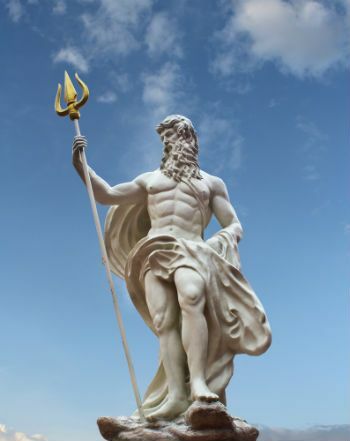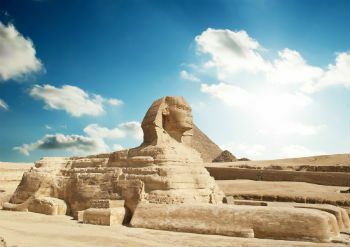O Anthropomorphism it is a philosophical concept that is associated with human forms, that is, it attributes characteristics, whether physical, feelings, emotions, thoughts, actions or human behavior to inanimate objects or beings irrational.
In other words, anthropomorphism attributes human characteristics to beings of non-human nature. From the Greek, the term “anthropomorphism” is the junction of the terms “anthropo” (man) and “morph" (form).
Anthropopathy
Anthropomorphism is associated with the concept of "Anthropopathy” so this means the attribution of human feelings to God. The word, derived from the Greek and represents the union of the terms “anthropo” (man) and “pathos", (passion).
For example, see the excerpt below taken from the genesis: "So the Lord repented of having made man on earth and this weighed on your heart” (Gen 6:6). In the example we can see the attribution of human feelings to God.
Biblical Anthropomorphism
 Angel representation
Angel representation
This concept has been widely used in several religions, for example, in Christianity, so that human aspects are attributed to gods or supernatural beings (angels, saints, demons), which do not have a determined form (amorphous).
We can think, for example, of God, who is incited as if he had a body (anthropomorphism) and human feelings (anthropopathy) being a figure associated with the male sex. However, the biblical texts make it clear that God is spirit and therefore does not have a human body or feelings.
Thus, anthropomorphism and anthropopathy have a very important role in religion since they facilitate the understanding of the spiritual world. For a better example, below are some excerpts from the Bible, where human characteristics are attributed to the Lord:
- “Thus it says the Lord: By this you shall know that I am the Lord: with the rod that I carry in the hand I will smite the waters of the Nile, and they will turn to blood.” (Exodus 7:17)
- “You eyes of the Lord turn to the righteous and their ears are attentive to your cry for help;” (Psalm 34:15)
- “O face of the Lord turns against those who do evil, to erase their memory from the earth.” (Psalm 34:16)
- “Give your way to the Lord; trust him, and he will act” (Psalm 37:5)
- “The Lord, however, laugh of the wicked, for they know their day is coming.” (Psalm 37:13)
Anthropomorphism in Mythology
 Statue of Poseidon, God of the Sea
Statue of Poseidon, God of the Sea
It is worth remembering that this concept is very old, which was used in several mythologies above all, in Greek mythology, in order to explain various aspects of human reality and nature.
Thus, the Greek deities and gods had characteristics that brought them closer to human beings. As in religion, anthropomorphism facilitated the understanding of intangible, abstract and intangible things in ancient societies.
Read more about Paganism.
Anthropomorphism in Literature
 The three Little Pigs
The three Little Pigs
Fairy tales and fables are notorious examples of anthropomorphism in literature, as explain moral and/or social relationships, human characteristics are attributed to objects, animals, plants. In general, they feature animals that talk and think. This expressive feature is widely used in the construction of cartoons, for example.
In the meantime, the personification, also called prosopopeia or animism, is a figure of speech widely used in literature and is associated with anthropomorphism since the term “personify” means “give life to inanimate beings or irrational”. Anthropomorphism is also used in other artistic expressions, such as sculpture and painting.
Zoomorphism
O zoomorphism it is a concept that attributes characteristics of animals to objects or human beings. The word means the joining of the terms "zoo” (animal) and “morphism” (forms).
In the same way as anthropomorphism, this concept is used in the arts, for example, in Brazilian literary work "the tenement” by Aluísio de Azevedo or in the novel by Graciliano ramos, "Dried lives".
In both, the characters have characteristics that bring them closer to animals. In addition to the zoomorphism present in the work, we also note anthropomorphism, where the characters get closer to animals and these to human beings, with the humanization of the dog called "Baleia".
Excerpt from the work “O Cortiço” by Aluísio de Azevedo
“It was five o'clock in the morning and the tenement woke up, opening, not its eyes, but its multitude of doors and windows lined up.
A happy and fed up waking up from someone who slept after seven hours of lead. How it was still felt in the indolence of the fog the last notes of the last guitar of the night antecedent, dissolving in the blond and tender light of dawn, like a sigh of longing lost on land alien.
The laundry, which had been left in the piers the day before, dampened the air and added a large acre of ordinary soap to it. The stones on the floor, whitish in the place of washing and in some spots bluish with indigo, showed a gray and sad pallor, made up of accumulations of dried foam.
(...) After a while, around the spouts there was a growing buzz; a tumultuous agglomeration of males and females. One after another washed their faces, uncomfortably, under the trickle of water that was running down from a height of about five palms. The ground flooded. Women already needed to tuck their skirts between their thighs so as not to get them wet; you could see the toasted nakedness of their arms and neck, which they stripped off, hanging their hair all the way up to the top of their hooves; the men, these were not concerned about not getting their fur wet, on the contrary, they stuck their heads well under the water and rubbed their nostrils and beards vigorously, sniffing and sniffing against the palms of their hands..”
Excerpt from the Works "Vidas Secas" by Graciliano Ramos
“She looked around the yard, saw Whale scratching himself as he rubbed the pelts on a Turk's foot, held the shotgun to his face. The dog eyed its owner suspiciously, curled up on the trunk and veered away, until it was on the other side of the tree, crouched and skittish, showing only its black pupils. Annoyed by this maneuver, Fabiano jumped out the window, crept along the corral fence, stopped on the corner post and brought the gun back to his face. As the animal was facing forward and did not present a good target, it took a few more steps forward. When he reached the catingueiras, he changed his aim and pulled the trigger. The charge reached the hindquarters and crippled one of Whale's leg, which began to bark desperately.
Hearing the shot and the barking, Miss Victoria clung to the Virgin Mary and the boys rolled over in bed, crying loudly. Fabiano withdrew.
And Baleia fled in a hurry, rounded the barrier, entered the little yard on the left, passed close to the carnation and wormwood pots, he slipped through a hole in the fence and won the yard, running in three foot. He went to copy, but feared he would find Fabiano and walked away to the goat pen. She lingered there for a moment, somewhat disoriented, then left without a destination, jumping up and down.
In front of the ox cart, the rear leg was missing. And, losing a lot of blood, walked like people, on two feet, dragging the back of the body with difficulty. He wanted to retreat and hide under the car, but he was afraid of the wheel.”
anthropozoomorphism
 Sphinx of Giza, Egypt
Sphinx of Giza, Egypt
already the anthropozoomorphism it is the union of the two concepts, that is, they relate human and animal forms and characteristics to inanimate and irrational beings. The Sphinx of Giza is a good example of anthropozoomorphism with a lion's body and a human head.
